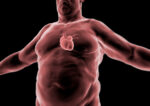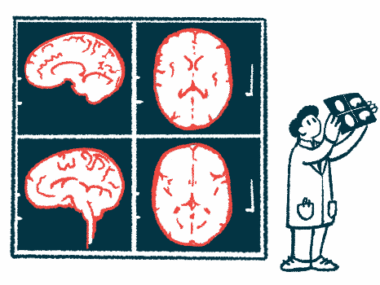High Blood Sugar Levels Reduced in Most Cushing’s Procedures
Written by |

Hyperglycemia, or high concentrations of sugar in the blood, can be brought to normal levels, or considerably reduced, in almost 70% of people with both Cushing’s syndrome and hyperglycemia following curative surgery or radiation therapy, a study has found.
The report highlighted the need for close monitoring and adjusting medications after surgery for Cushing’s syndrome in this group of patients.
“We showed that two-thirds of patients demonstrated resolution or improvement of hyperglycemia during follow-up, and more than half were able to decrease the dose or the number of medications used for hyperglycemia,” the researchers wrote.
The study, “The Effect of Curative Treatment on Hyperglycemia in Patients With Cushing Syndrome,” was published in the Journal of the Endocrine Society.
People with Cushing’s syndrome produce excessive levels of the stress hormone cortisol, a condition known as hypercortisolism. Tumors arising above the kidneys in the adrenal glands or in the brain’s pituitary gland — called Cushing’s disease — are among the most common causes of abnormally high cortisol levels.
Cortisol-stimulating tumors located outside the pituitary and the adrenal glands, known as ectopic tumors, also may result in the onset of Cushing’s syndrome.
Cushing’s can often lead to several metabolic complications, including hyperglycemia and diabetes mellitus. According to previous studies, up to 38–84% of patients with Cushing’s have hyperglycemia, a hallmark symptom of diabetes.
Researchers noted the range in estimates was due to the variation in patient groups regarding the subtype of Cushing’s, the duration of the disease, and the severity of hypercortisolism. A lack of consistent methodology when evaluating hyperglycemia between studies and patients may also have contributed to this variation.
In addition, although some studies reported the effect of curative surgery for Cushing’s on hyperglycemia, these mostly focused on patients with Cushing’s disease.
To address this gap in knowledge, a team of researchers at the Mayo Clinic, in Rochester, Minnesota, evaluated the effect of curative procedures on hyperglycemia in patients with Cushing’s syndrome, and looked for factors associated with the improvement of hyperglycemia at follow-up.
The study enrolled adults with Cushing’s syndrome and hyperglycemia who had been treated with a curative procedure between January 2000 and November 2019. These procedures included the surgical removal of pituitary, adrenal, or ectopic tumors, and radiation therapy.
Information on symptoms, laboratory and imaging findings, and Cushing’s subtype (pituitary, ectopic, or adrenal) were collected from patients’ medical records. Each patient received a disease biochemical and clinical severity classification score based on clinical and laboratory data.
The main goal of the study was to assess improvements, or the resolution of hyperglycemia, following Cushing’s remission. Researchers defined resolution as the absence of hyperglycemia, based on hemoglobin A1c (HbA1c) levels and/or fasting blood sugar levels, without any need for anti-hyperglycemic therapy. Of note, a high HbA1c level means too much sugar is in the bloodstream.
Improvement was defined as either a decrease in HbA1c levels and/or fasting blood sugar levels at the end of follow-up while still on stable anti-hyperglycemic medications, or the doctor’s decision to decrease the dose and/or number of anti-hyperglycemic treatments.
A total of 174 patients were included in the study. The median age of Cushing’s diagnosis was 51 and 73% of the participants were women.
Pituitary tumors accounted for 60.9% of the cases, ectopic for 14.4%% and adrenal for 24.7%. The biochemical severity score was highest in patients with ectopic tumors, but the clinical severity score was highest in those with pituitary tumors.
At the time of Cushing’s diagnosis, 79.9% of participants had type 2 diabetes, 19.0% had pre-diabetes, and 1.1% had type 1 diabetes. Before curative treatment, fasting blood sugar levels were similar between Cushing’s subtypes, but the proportion of patients treated for hyperglycemia was highest in patients with pituitary tumors, at 86%.
After Cushing’s remission, 21% of patients showed hyperglycemic resolution, 47% showed improvement, and 32% reported no changes or worsening in hyperglycemia at the end of follow-up (median of 10.5 months).
HbA1c levels decreased significantly, as did the daily insulin treatment dose. Insulin is a hormone that helps move glucose from the bloodstream into cells.
“We showed that the overall HbA1c decreased by 0.84%, and only a minority of patients needed to intensify their hyperglycemia regimen after achieving [Cushing’s] remission,” the researchers wrote.
Patients with a biochemical score classified as severe had a 2.4 times greater chance of experiencing an improvement in hyperglycemia at the end of follow-up, compared with those who had a moderate/mild classification.
Similarly, a non-adrenal form of Cushing’s was associated with a nearly threefold greater chance of hyperglycemic improvement, compared with the adrenal subtype. Age, sex, and body mass index, a measure of body fat, or the type of hyperglycemia (diabetes versus pre-diabetes) were not associated with improvement of hyperglycemia after Cushing’s remission.
“Two-thirds of patients with [Cushing’s syndrome] and hyperglycemia demonstrate resolution or improvement of hyperglycemia after a curative procedure,” the researchers wrote. “Close monitoring during [Cushing’s syndrome] recovery is needed to ensure appropriate therapy modification.”






